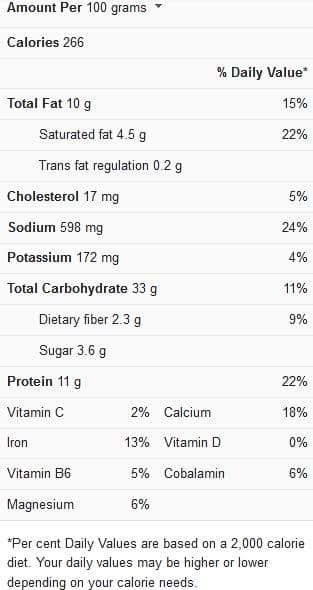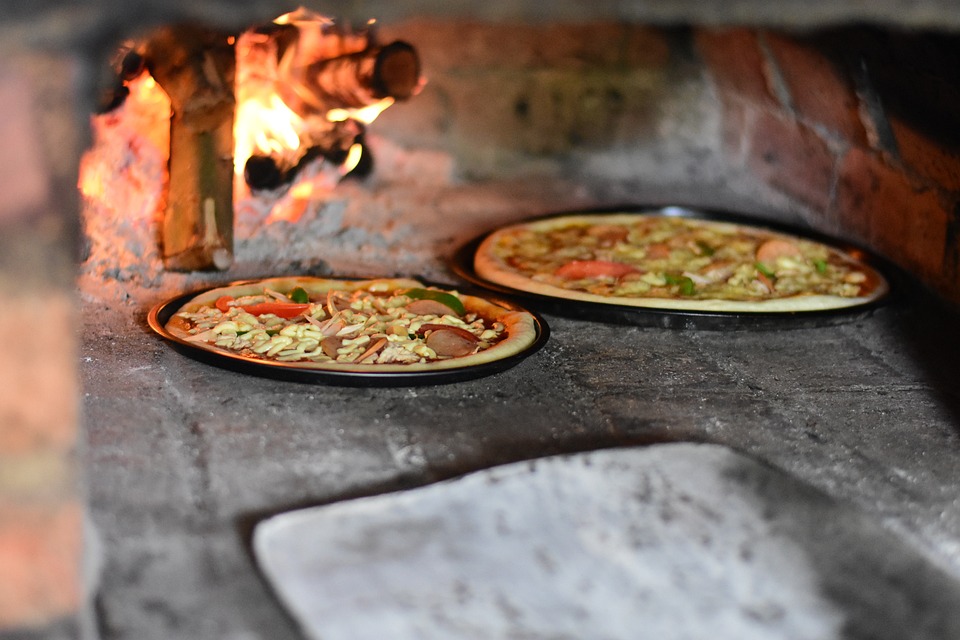Updated on January 4th, 2024
If you’re a home cook without a wood-fired oven, you’ll typically miss the tremendous heat from wood-fired ovens that help create the perfectly crispy pie crust that makes pizza so delicious. However, pizza stones can replicate these conditions in regular kitchen ovens, making the cooking process so much easier and helping you achieve perfectly cooked pizza.
Here, we’ll teach you how to cook with a pizza stone if you’re not already familiar with the process. We’ll also be providing tips on how to care for your pizza stone and related practices that guarantee the best results in your pizza recipes.
Pizza Nutrition Facts

Tips for Cooking with a Pizza Stone
A pizza stone is a flat slab made from stone or ceramic. Typically, this stone lies inside your oven on the rack, and there it absorbs and, more significantly, retains heat. In this situation, the hot stone acts as the floor of a wood-fired oven, conducting heat to the bottom of the crust because the unbaked pizza dough is lying directly on it.
When making pizza using a pizza stone, you’ll be needing the following tips for the best results:
Baking stones vs. pizza stones – Pizza stones are a subset of what is referred to as baking stones in general. The key distinction is that a pizza stone may be spherical, whereas a baking stone is more likely to be rectangular. In general, all pizza stones are also baking stones; however, not all are pizza stones. However, a rectangular baking stone can be used to make pizza.
The thicker pizza stones perform better and are generally more robust, but they’re more high-priced and may take longer to heat up.
The right type of pizza stones to choose – Pizza stones are available in a range of shapes and sizes. They are reasonably inexpensive to purchase – especially when compared to building a brick oven in your backyard. Square or rectangular stones are preferred over other types since they fit better into the oven and provide a little more space on both sides of the pizza. There wouldn’t be much additional area around the sides with a round pizza stone, so pizza toppings may occasionally pour into your oven.
Preheat your pizza stone – Because the stone absorbs heat, the longer you can preheat it, the better. It is recommended to preheat your pizza stone for at least 30 minutes at whichever temperature you plan to bake your pizza (500 degrees Fahrenheit is normally advised for pizza).
Make use of a pizza peel – Purchase a good pizza peel to make it easier to slide the pizza on and off the stone. Making use of an oven mitt and your hands is a bad idea.
Watch your pizza closely as it cooks – On a stone, pizzas cook faster. To avoid burning your pizza, you may need to watch it closely so you can rotate it once during cooking or remove it a few minutes early.
Cleaning your pizza stone – Because pizza stones are porous, they absorb moisture. If you try to clean your pizza stone by submerging it in water, you’ll end up with a rock sponge that will take an eternity to dry. As a result, thoroughly cleaning a pizza stone is not recommended.
Instead of a thorough clean up, you can do the following:
- Try using a scraper: If you find any cheesy bits that got stuck on your pizza stone during the cooking process, scrape them off with a firm spatula as soon as the stone is cool. If necessary, spray a little hot water on the stone to loosen up the bits, but don’t immerse the stone inside or underwater.
- Baking soda paste: If you notice a weird odor when something stinky pours on your pizza stone, wipe it with a baking soda paste. Mix 2 tablespoons of baking soda with one tablespoon of water, then apply this mixture to your pizza stone and scrub using a dish brush.
If there’s any excess, wipe it away with a moist cloth before placing the stone in a very low oven for 1-2 hours to dry entirely. It’s possible that you’ll only need to do this once or twice during your pizza-making adventures, which should be quite sufficient.
Avoid spraying your pizza stone with water when hot – The stone will almost certainly crack due to the temperature difference between it and the water. Allow the stone to cool to room temperature before cleaning it.
View this post on Instagram
Cooking with a Pizza Stone
Before cooking with a pizza stone, it is important to understand how it works. The majority of the work a pizza stone does is distribute heat from beneath it to the dough. It’s a common misconception that a pizza stone’s porous surface “absorbs moisture” to generate a crispy bottom, but this isn’t exactly the case. Because liquids are swiftly transformed to steam and evaporate when the dough is heated to 500 degrees Fahrenheit, the dough does not absorb any moisture at that temperature.
Porousness is a factor, but only in the sense that, unlike a metal baking pan, the small fissures and gaps of a pizza stone allow evaporating steam to escape better than with a metal baking pan. Metals with ultra-smooth surfaces trap moisture, resulting in a mushy crust rather than a dry, crispy crust.
But, for the most part, a pizza stone works majorly because it becomes really hot.
Follow these easy steps when cooking with a pizza stone:
- In a cold oven, place your pizza stone.
- Preheat the oven to 500 degrees Fahrenheit, and the stone is preheated at the same time as the oven.
- Place the pizza on the stone and slide it in.
- Bake the pizza until the cheese is lightly browned
- Take the pizza out of the oven and turn the oven off.
- Brush the stone after it has cooled, but do not wash it.
Conclusion
A pizza stone is a great way to introduce the effects of a wood-fired oven when making a pizza in your kitchen. However, you can only achieve great results if you know how to use it properly, so pay close attention to all the tips and suggestions in this article. Enjoy your pizza-making adventures!
